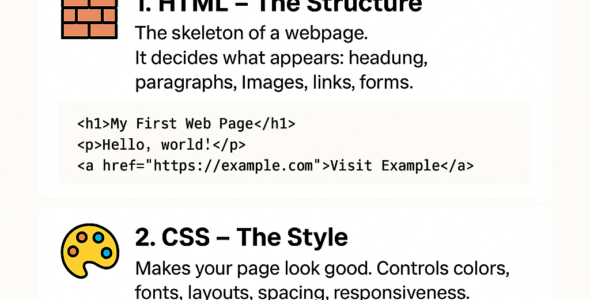In this module, we'll explore the advanced CSS selectors that allow you to target specific elements on a web page with precision. You'll learn about the syntax, examples, and best practices for using advanced CSS selectors to write more efficient and effective CSS code.
Advanced CSS Selectors
Here are some advanced CSS selectors:
1. Attribute Selectors: Select elements based on their attributes.
Syntax: [attribute], [attribute="value"], [attribute~="value"], [attribute^="value"], [attribute$="value"], [attribute*="value"]
Example: input[type="text"]
1. Pseudo-Classes: Select elements based on their state or position.
Syntax: :pseudo-class
Example: :hover, :active, :focus, :first-child, :last-child
1. Pseudo-Elements: Select parts of an element.
Syntax: ::pseudo-element
Example: ::before, ::after, ::first-line, ::first-letter
1. Combinators: Select elements based on their relationships.
Syntax: selector1 combinator selector2
Example: div > p, div + p, div ~ p
1. nth-Selectors: Select elements based on their position.
Syntax: :nth-child(n), :nth-last-child(n), :nth-of-type(n), :nth-last-of-type(n)
Example: :nth-child(2n), :nth-last-child(3)
Examples
Here are some examples of using advanced CSS selectors:
- Select all input elements with a type attribute of "text":
input[type="text"]
- Select all elements with a class of "active":
.active
- Select all elements that are the first child of their parent:
:first-child
- Select all elements that are the last child of their parent:
:last-child
- Select all elements that are the nth child of their parent:
:nth-child(2n)
Best Practices
Here are some best practices to keep in mind when using advanced CSS selectors:
- Use attribute selectors to target elements with specific attributes.
- Use pseudo-classes to target elements based on their state or position.
- Use pseudo-elements to target parts of an element.
- Use combinators to target elements based on their relationships.
- Use nth-selectors to target elements based on their position.
- Test your selectors in different browsers and devices to ensure compatibility.
By mastering advanced CSS selectors, you'll be able to write more efficient and effective CSS code that targets specific elements with precision.

